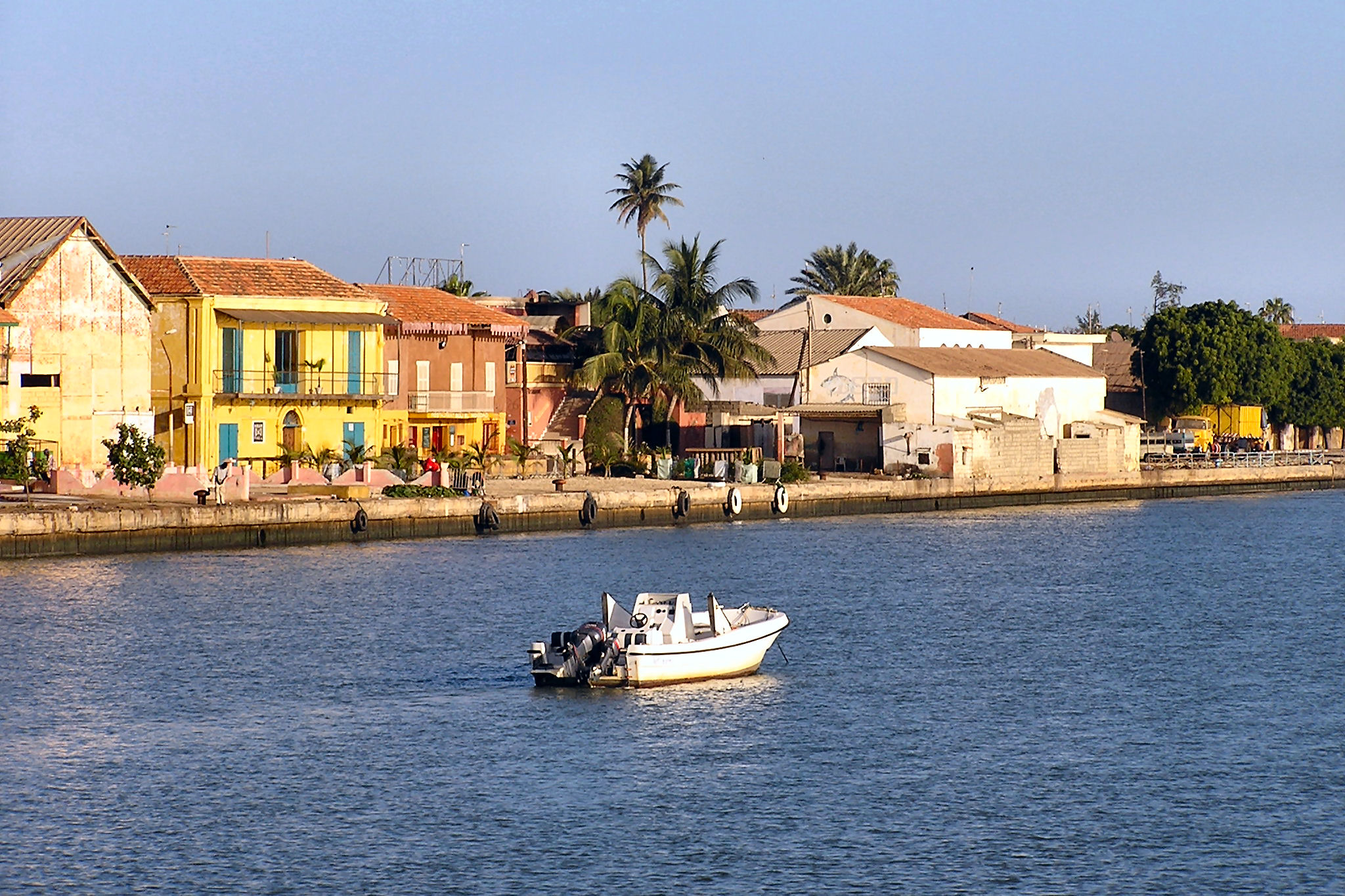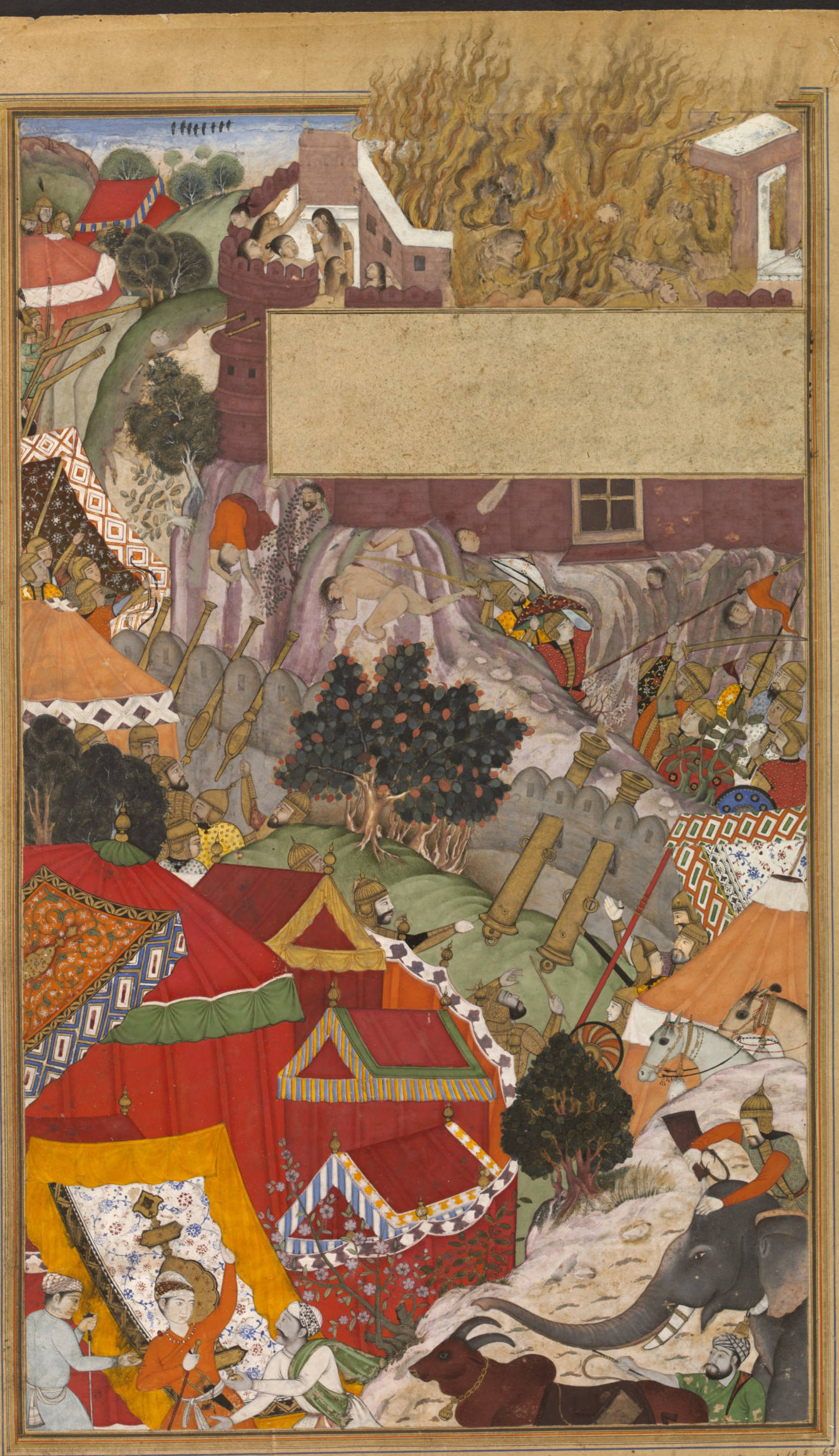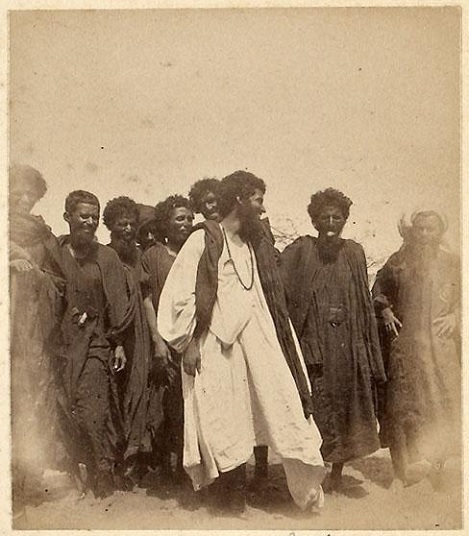|
N'Der
N'Der (also spelled Nder or Ndeer) is a small town on the western shore of the Lac de Guiers, in northern Senegal. It was the third and last capital of Waalo until the annexion of the kingdom by France in 1855. Geography N'Der is located on the Western shore of the Lac de Guiers. The nearest settlements are Sadiale, Nieti Yone, Mbane and Naere. History In 1733, N'Der became the third capital in the history of Waalo as Brak Njak Aram moved there from Njurbel, the previous capital. In 1819, as the Brak Amar Fatim Borso and most of his warriors had traveled to Saint-Louis to have their wounds treated at the French hospital after a battle against Trarza Moors, the undefended capital became the target of a slave raid by the Trarza army. After sending their children to hide in the fields, the women of N'Der organized a desperate resistance against the Trarzas. Although they managed to repulse a first assault, the Trarza warriors soon attacked again and all of the Wolof women dec ... [...More Info...] [...Related Items...] OR: [Wikipedia] [Google] [Baidu] |
Battle Of Dioubouldou
The Battle of Dioubouldou (sometimes spelled Jubuldu, Dioubouldy or Dybuldu) was fought on 25 February 1855 between French forces of Colonel Louis Faidherbe and the combined Waalo and Trarza forces under Queen Ndaté Yalla Mbodj. Background Although they were historical enemies, relations between Waalo and Trarzas had recently got a bit warmer when Mohamed El-Habib married the sister of Queen Ndaté. Together, they started challenging the growing influence of the French in the vicinity of Saint-Louis. In January 1855, Queen Ndaté sent an imperious letter to French governor Louis Faidherbe, ordering him to evacuate the outskirts of Saint-Louis immediately. In response, Faidherbe gathered troops and local volunteers and departed from Saint-Louis in order to march on N'Der, the village of Queen Ndaté. Battle On 25 February, the French column, composed of 400 regulars, 400 volunteers from Saint-Louis and a platoon of colonial cavalry, met with the Waalo-Trarza army near a woo ... [...More Info...] [...Related Items...] OR: [Wikipedia] [Google] [Baidu] |
Waalo
Walo ( wo, Waalo) was a kingdom on the lower Senegal River in West Africa, in what are now Senegal and Mauritania. It included parts of the valley proper and areas north and south, extending to the Atlantic Ocean. To the north were Moorish emirates; to the south was the kingdom of Cayor; to the east was Jolof. Waalo had a complicated political and social system, which has a continuing influence on Wolof culture in Senegal today, especially its highly formalized and rigid caste system. The kingdom was indirectly hereditary, ruled by three matrilineal families: the Logar, the Tedyek, and the Joos, all from different ethnic backgrounds. The Joos were of Serer origin. This Serer matriclan was established in Waalo by Lingeer Ndoye Demba of Sine. Her grandmother Lingeer Fatim Beye is the matriarch and early ancestor of this dynasty. These matrilineal families engaged in constant dynastic struggles to become " Brak" or king of Waalo, as well as warring with Waalo's neighbors. The r ... [...More Info...] [...Related Items...] OR: [Wikipedia] [Google] [Baidu] |
Brak (title)
Brak (or Braque) was the title of the kings of the kingdoms of Waalo (or Oualo) and Biffeche on the Senegal River in Senegal and Mauritania in West Africa until the 19th century. The word ''brak'' possibly derive from Arabic and mean "high," or from the Arabic word ''baraka'' (divine blessing)Amadou Wade, « Chronique du Wâlo sénégalais », ''Bulletin de l'IFAN'', Série B, tome 26, n° 3-4, juillet-octobre 1964, p. 451–452) The main Brak was the king of the Kingdom of Waalo with capital at Ndiourbel north of the river, and later at Nder on the west shore of Lac de Guiers. The 'Petit Brak' was the king or seigneur of the Kingdom of Biffeche, with his capital compound at on the Senegal River, near Saint-Louis. The kingdoms of Waalo and Biffeche were labelled as 'Brak' or 'Braque' on some French maps of the area, not to be confused with the moorish realm of Brakna Brakna ( ar, ولاية البراكنة) is a region in south-west Mauritania. Its capital is Aleg. Other m ... [...More Info...] [...Related Items...] OR: [Wikipedia] [Google] [Baidu] |
Ndaté Yalla Mbodj
Ndaté Yalla Mbodj also known as Ndateh Yalla Mbooj — 1860M'bayo, Tamba Eadric, ''African Interpreters, Mediation, and the Production of Knowledge in Colonial Senegal: The Lower and Middle Senegal Valley, Ca. 1850s to Ca. 1920s, Volume 2''. Michigan State University. History (2009), p. 208 or 1814—1856) was the last great ''Lingeer'' (Queen) of Waalo, one of the four Jolof kingdoms in present day Senegal located in what is now North-West Senegal. During her reign, she fought against French colonization and Moorish invasion of her kingdom. In the 19th century,the Wolof queens Ndaté Yalla and her sister Ndjeumbeut Mbodj stood out as two of the most powerful women of 19th century Senegalese dynastic history. Early life and family Ndaté Yalla, usually cited by most historians as being born in c. 1810 Messiant, Christine ''Premières dames en Afrique'', KARTHALA Editions (2004), p. 1908,(Retrieved 21 July 2019) (or 1814 according to François-Xavier Fauvelle) to the powerful a ... [...More Info...] [...Related Items...] OR: [Wikipedia] [Google] [Baidu] |
Lac De Guiers
The Lac de Guiers or Lake Guiers is a lake in northern Senegal, south of the city of Richard-Toll and in the Louga and Saint-Louis regions. It is a chief source of fresh water for the city of Dakar, hundreds of kilometers to the south-west, through underground pipes. It is about 35 kilometers long and 8 kilometers wide, and is supplied by the Ferlo or Bounoum River, which flows north into its southern end, from Fouta in the rainy season. Water used to flow out to the Senegal River north through the Portuguese River, but this has been replaced by a straight canal to Richard-Toll. A dam was built in 1916 to prevent saltwater flowing in from Taoué River and the Senegal River delta. The shores are mostly fertile. The north shore and surrounding area have been converted to a large sugar-growing region irrigated with water from the lake. Lac de Guiers is designated an Important Bird Area by BirdLife International; the key species are lesser flamingo (''Phoeniconaias minor''), ... [...More Info...] [...Related Items...] OR: [Wikipedia] [Google] [Baidu] |
Saint-Louis, Senegal
Saint Louis or Saint-Louis ( wo, Ndar), is the capital of Senegal's Saint-Louis Region. Located in the northwest of Senegal, near the mouth of the Senegal River, and 320 km north of Senegal's capital city Dakar, it has a population officially estimated at 258,592 in 2021. Saint-Louis was the capital of the French colony of Senegal from 1673 until 1902 and French West Africa from 1895 until 1902, when the capital was moved to Dakar. From 1920 to 1957, it also served as the capital of the neighboring colony of Mauritania. The town was an important economic center during French West Africa, but it is less important now. However it still has important industries, including tourism, a commercial center, a center of sugar production, and fishing. The Tourism industry is in part due to the city being listed as a UNESCO World Heritage Site in 2000. However, the city is also Climate change vulnerability, vulnerable to climate change—where sea level rise is expected to threaten the ci ... [...More Info...] [...Related Items...] OR: [Wikipedia] [Google] [Baidu] |
Blockhouse
A blockhouse is a small fortification, usually consisting of one or more rooms with loopholes, allowing its defenders to fire in various directions. It is usually an isolated fort in the form of a single building, serving as a defensive strong point against any enemy that does not possess siege equipment or, in modern times, artillery, air force and cruise missiles. A fortification intended to resist these weapons is more likely to qualify as a fortress or a redoubt, or in modern times, be an underground bunker. However, a blockhouse may also refer to a room within a larger fortification, usually a battery or redoubt. Etymology The term '' blockhouse'' is of uncertain origin, perhaps related to Middle Dutch '' blokhus'' and 18th-century French '' blocus'' (blockade). In ancient Greece Blockhouses existed in ancient Greece, for example the one near Mycenae. Early blockhouses in England Early blockhouses were designed solely to protect a particular area by the use of ... [...More Info...] [...Related Items...] OR: [Wikipedia] [Google] [Baidu] |
Self-immolation
The term self-immolation broadly refers to acts of altruistic suicide, otherwise the giving up of one's body in an act of sacrifice. However, it most often refers specifically to autocremation, the act of sacrificing oneself by setting oneself on fire and burning to death. It is typically used for political or religious reasons, often as a form of non-violent protest or in acts of martyrdom. It has a centuries-long recognition as the most extreme form of protest possible by humankind. Etymology The English word '' immolation'' originally meant (1534) "killing a sacrificial victim; sacrifice" and came to figuratively mean (1690) "destruction, especially by fire". Its etymology was from Latin "to sprinkle with sacrificial meal (mola salsa); to sacrifice" in ancient Roman religion. ''Self-immolation'' was first recorded in Lady Morgan's ''France'' (1817). Effects Self-immolators frequently use accelerants before igniting themselves. This, combined with the self-immolators' refusal ... [...More Info...] [...Related Items...] OR: [Wikipedia] [Google] [Baidu] |
Slave Raiding
Slave raiding is a military raid for the purpose of capturing people and bringing them from the raid area to serve as slaves. Once seen as a normal part of warfare, it is nowadays widely considered a crime. Slave raiding has occurred since antiquity. Some of the earliest surviving written records of slave raiding come from Sumer (in present-day Iraq). Kidnapping and prisoners of war was the most common source of African slaves, although indentured servitude or punishment also resulted in slavery. The many alternative methods of obtaining human beings to work in indentured or other involuntary conditions, as well as technological and cultural changes, have made slave raiding rarer. Reasons Slave raiding was a violent method of economic development where a resource shortage was addressed with the acquisition by force of the desired resource, in this case human labor. Other than the element of slavery being present, such violent seizure of a resource does not differ from si ... [...More Info...] [...Related Items...] OR: [Wikipedia] [Google] [Baidu] |
Emirate Of Trarza
The Emirate of Trarza was a precolonial state in what is today southwest Mauritania. It has survived as a traditional confederation of semi-nomadic peoples to the present day. Its name is shared with the modern Region of Trarza. The population, a mixture of Berber tribes, had been there for a long time before being conquered in the 11th century by Hassaniya Arabic speakers from the north. Europeans later called these people Moors/''Maures'', and thus have titled this group "the Trarza Moors". Early history Trarza, founded in the midst of the final wars between the local Berber Bedouins and the Arab conquerors of the Maghreb, was organized as a semi-nomadic state led by a Muslim prince, or emir. Trarza was one of three powerful emirates that controlled the northwest bank of the Senegal River from the 17th to the 19th centuries CE; the others were the emirates of Brakna, and the Tagant. Society and structure The Arab conquests had resulted in a society divided according to ... [...More Info...] [...Related Items...] OR: [Wikipedia] [Google] [Baidu] |
Regions Of Senegal
Senegal is subdivided into 14 regions (French: ''régions'', singular''région''), each of which is administered by a ''Conseil Régional'' (pl.: ''Conseils Régionaux'') elected by population weight at the arrondissement level. Senegal is further subdivided into 45 departments, 103 arrondissements (neither of which have administrative function) and by ''collectivités locales'' (the 14 ''regions'', 110 ''communes'', and 320 ''communautés rurales'') which elect administrative officers. from Union des ''Associations d’ Elus Locaux (UAEL) du Sénégal''. See also the law creating current local government structures Code de ... [...More Info...] [...Related Items...] OR: [Wikipedia] [Google] [Baidu] |
Amar Fatim Borso
Amar may refer to: People Given name * Amar (British singer) (born 1982), British Indian singer born Amar Dhanjal * Amar (Lebanese singer) (born 1986), born Amar Mahmoud Al Tahech * Amar Bose (1929–2013), Founder of Bose Corporation * Amar Gupta (born 1953), Indian computer scientist * Amar Gegić, Bosnian basketball player * Amar Khan, Pakistani director, writer and television actress * Amar Mehta (born 1990), Indian figure skater * Amar Singh (general) ( 13th century), military general of Brahmachal * Amar Singh Thapa (1751–1816), Nepalese Badakaji * Amar Singh Thapa (sardar) (1759–1814), Nepalese General * Amar Talwar (born 1922), Bollywood and Television actor * Amar Upadhyay (born 1972), Indian Television actor Surname * Akhil Amar (born 1958), American professor of law at Yale * David Amar (1920–2000), Moroccan Jewish businessman * Jean-Pierre-André Amar (1755–1816), politician in the French Revolution * Jo Amar (1930–2009), Moroccan-Israeli singer * ... [...More Info...] [...Related Items...] OR: [Wikipedia] [Google] [Baidu] |




